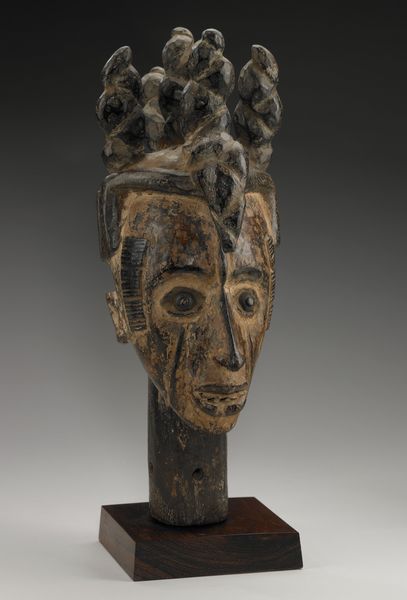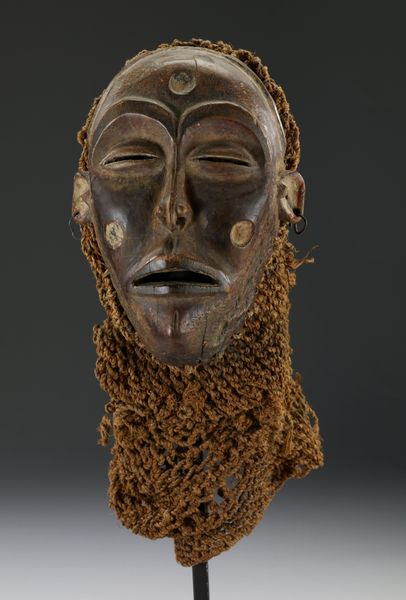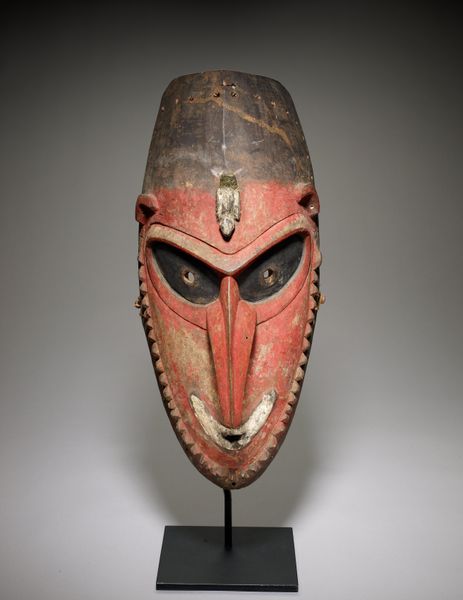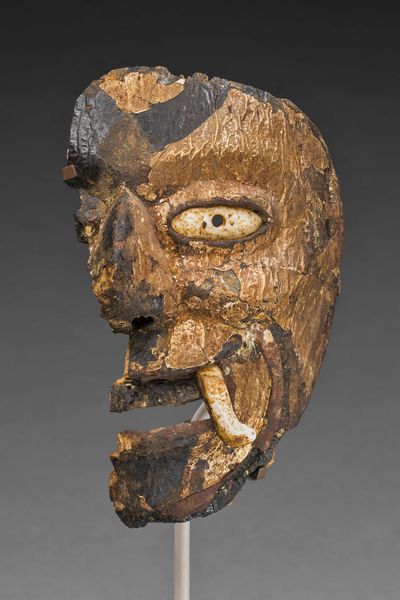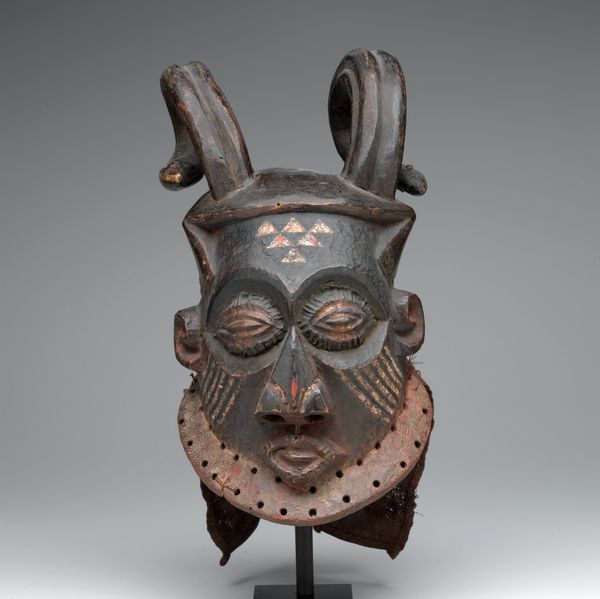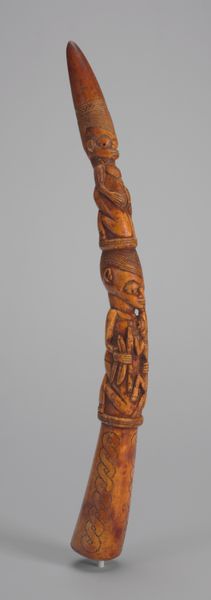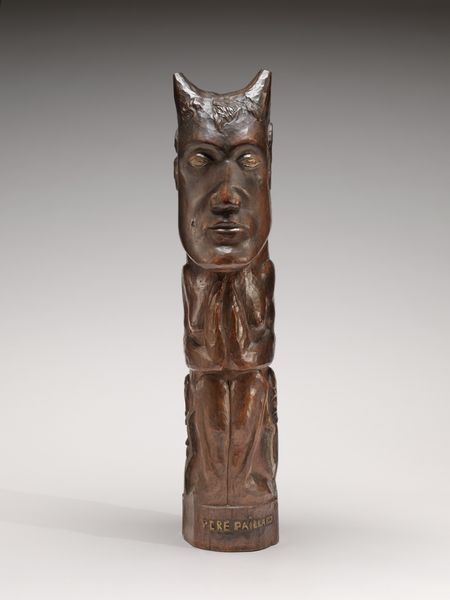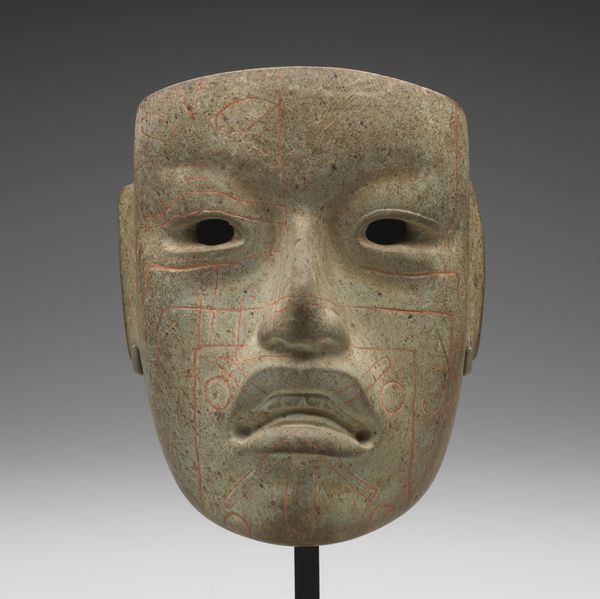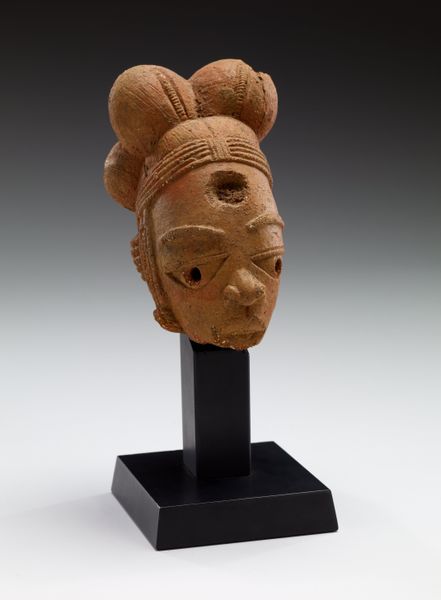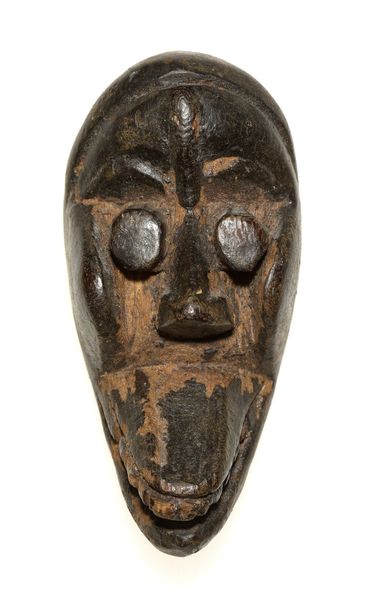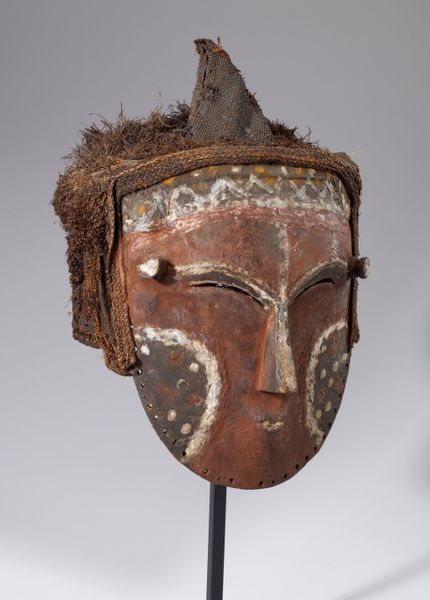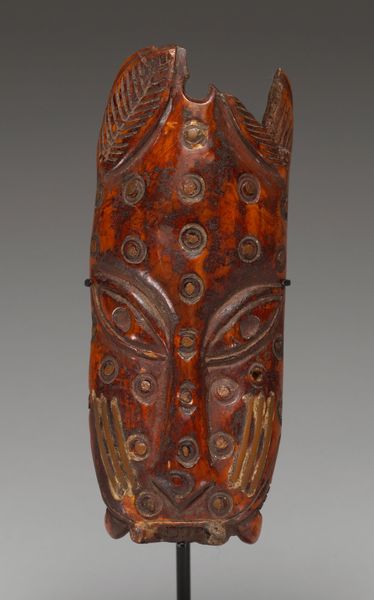
carving, sculpture, wood
#
carving
#
sculpture
#
figuration
#
sculpture
#
wood
Dimensions: 10 9/16 x 6 1/16 x 5 15/16 in. (26.83 x 15.4 x 15.08 cm) (head only)
Copyright: Public Domain
Editor: Here we have a wooden carving titled "Head," believed to be from the 18th century and attributed to the Maori people. The face is covered in elaborate swirls and geometric designs. It feels both powerful and serene. What story do you think this carving has to tell? Curator: Well, as a historian, I see this "Head" as a potent artifact reflecting the intricate social fabric of Maori society at the time. This carving would have been part of a complex system of symbols, conveying status, ancestry, and spiritual beliefs. Consider where it was originally displayed. Was it on a building, a canoe, perhaps held during a ceremony? Each possibility drastically changes the narrative we project onto the artwork. Editor: That’s fascinating! I hadn't considered how the location might influence its meaning. It makes you think about the politics surrounding it. Did it represent power structures within the community? Curator: Exactly! The imagery would be carefully controlled, communicating specific messages to the community and beyond. Who had the authority to commission such a work, and whose likeness might it represent? The museum display detaches this object from its intended socio-political context and prompts an array of questions. How can museums approach pieces that are displaced? Editor: That's a complex question, the carving carries so much embedded history. Thanks to you, I am now also questioning where it originated and who had the authority to bring it to life, it’s no longer just an isolated head. Curator: Precisely. By exploring these questions, we begin to understand the agency and impact of Maori art within its cultural and historical milieu. I'm also leaving here questioning how the displacement of this piece in a museum has removed a sense of authority.
Comments
minneapolisinstituteofart almost 2 years ago
⋮
Elaborately carved heads such as this one were mounted on poles and used to mark territorial boundaries. Called rahui, each head served as a warning to trepassers that they were entering the land of another clan. The face is carved into a stern, serious expression, befitting its role as a cautionary signal. It used to have shell inlay in its eyes, which gave them lifelike flash and fire.
Join the conversation
Join millions of artists and users on Artera today and experience the ultimate creative platform.
